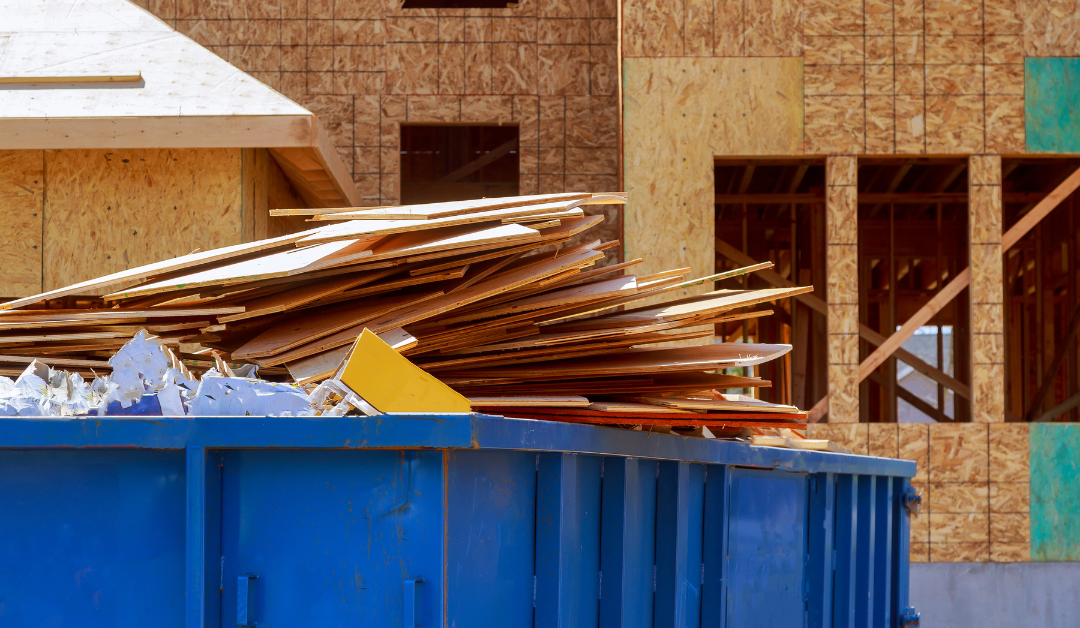Why It Matters to Choose the Right Waste Disposal Dumpster
Renting a dumpster is more than just ordering a box and having it dropped off. The right waste disposal dumpster can:
- Save you money by avoiding overage or multiple hauls
- Prevent delays by ensuring enough capacity from the start
- Improve safety by allowing proper, stable loading
- Keep you compliant with local rules and regulations
Choosing wisely ensures your project runs smoothly from start to finish.
Step 1: Estimate Volume and Type of Waste
The first step is understanding how much and what kind of waste you’ll generate. A home cleanout might involve bulky furniture, boxes, and trash. Remodeling projects usually create drywall, wood, shingles, and scrap metal. Landscaping often produces organic waste like branches and sod.
Each type of waste has different density and disposal requirements. A waste disposal dumpster full of concrete or roofing shingles will hit its weight limit far faster than one filled with cardboard or drywall.
As a rule of thumb:
- 10-yard dumpster: ideal for garage cleanouts or single-room renovations
- 15-yard dumpster: suited for small to medium remodeling jobs
- 20-yard dumpster: versatile for roofing, bigger remodels, or whole-house decluttering
- 30–40 yard dumpster: best for large-scale construction or demolition
Always allow a little buffer space. Most projects create more waste than expected.
Step 2: Match Size, Weight, and Configuration
A 20-yard dumpster may have the volume you need, but if it has a low weight limit, you might hit the maximum early and face extra charges. In contrast, a 15-yard unit with a higher tonnage allowance could be more cost-effective.
Configuration also matters:
- Roll-off dumpsters are the most common and fit most residential and construction projects.
- Enclosed dumpsters contain debris in windy areas or where appearance matters.
- Compactor dumpsters are best for long-term, high-volume waste in commercial spaces.
Step 3: Site Logistics and Placement
Even if you’ve chosen the perfect waste disposal dumpster, you need to think about where it will sit:
- Place it on solid ground like asphalt or concrete.
- Avoid lawns or soft soil unless you use boards for support.
- Ensure the truck has access for drop-off and pickup.
- Check with your city if a permit is required for street placement.
- Keep it close to the work area, but avoid blocking driveways or utilities.
Proper placement reduces hazards and keeps your project efficient.
Step 4: Understand Pricing and Rental Terms
When renting a waste disposal dumpster, it’s important to know what’s included so there are no surprises. At Mountz Disposal, we make pricing simple and transparent, so you always know what you’re paying for.
Most rentals include:
-
A set rental period (often a week, with flexible extensions if needed)
-
A clear weight allowance, with options to add more if your project requires it
-
Guidelines on which items can and cannot go in the dumpster
By reviewing these details up front, you can plan confidently and stay on budget. Our goal is to provide straightforward pricing with no confusion, so you can focus on your project instead of worrying about extra costs.
Step 5: Safety, Loading, and Best Practices
A waste disposal dumpster is only as useful as how you load it. Safe and efficient loading saves you time and money:
- Distribute weight evenly across the container.
- Never fill above the rim or block the tarp system.
- Break down bulky items to maximize space.
- Keep prohibited items out to avoid penalties.
- Wear gloves and protective gear when handling debris.
Real-World Example: Remodeling a Kitchen
A kitchen remodel produces cabinets, drywall, flooring, and countertops in about eight pickup truck loads. After consulting with the provider, the homeowner rents a 15-yard waste disposal dumpster with a three-ton weight limit. They place it in the driveway for easy loading and keep paint cans and electronics separate.
By breaking down items and staying within limits, the homeowner avoids overage charges and completes the job with one dumpster. Planning ahead saved them time and money.
Quick Comparison of Dumpster Sizes
- 10-yard: small projects like garage cleanouts or single-room remodels
- 15-yard: kitchen remodels or moderate renovations
- 20-yard: roofing jobs, larger cleanouts, or multi-room renovations
- 30–40 yard: large demolition or construction projects
Questions to Ask Your Provider
- What sizes and capacities are available?
- What’s included in the base price (weight, rental days)?
- What are the overage fees?
- Are there surcharges for fuel or administration?
- Do I need a permit for street placement?
- Which items are prohibited?
- Where does the waste go, and is recycling included?
Key Takeaways
Choosing the right waste disposal dumpster requires estimating volume and weight, matching the right size, and planning for placement. Always review rental terms, avoid hidden charges, and load safely. Working with us at Mountz Disposal ensures your waste is handled properly and your project stays on track.
Ready to Get Started?
Mountz Disposal makes dumpster rental simple, affordable, and reliable. Whether you’re cleaning out a garage, remodeling your home, or managing a large job site, we have the right solution for you.
Stay up to date with the latest at Mountz Disposal by following us on Facebook.

